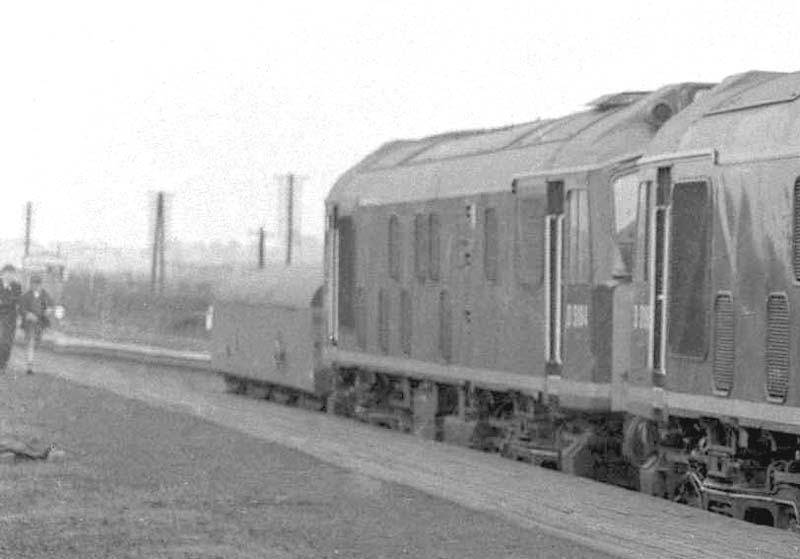 |
|
London North Western
Railway:

Midland
Railway:

Stratford
Midland Junction Railway
|

|
LMS Route: Birmingham New Street to Tamworth
LMS Route: Nuneaton to Birmingham New Street
Bromford Bridge Station: mrbb645a
 |
Close up of image 'mrbb645' showing the front of the pair of
diesels standing at Bromford Bridge with a brake tender coupled to the front of
the locomotives. Brake tenders were used by British Railways when the brakes on
diesel locomotives were inadequate to control an unfitted train. Originally
intended to be used in North East England, where they were usually propelled
(pushed) by the locomotive, their use later spread to other regions; on the
Southern Region they were normally hauled behind the locomotive. The tender
took the form of a hollow box, low enough to avoid obscuring the driver's view
when pushed. The body was carried on a pair of former carriage bogies, which
provided the automatic brakes. The body was filled with scrap steel to raise
the weight of the vehicle to between 35½ and 37½ tons;
consequently increasing the available brake force. Four lamp brackets were
provided at each end to display locomotive headcode discs describing the class
of train. When being propelled, the tender obscured the buffer beam of the
locomotive resulting in the need to mount the headcode on the brake tender.
Introduced around 1964-5, they were taken out of use in the 1980s when the
practice of using unfitted trains was finally discontinued after nearly 150
years.
 back back

|
